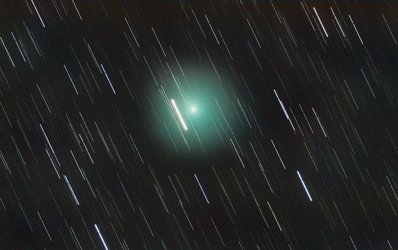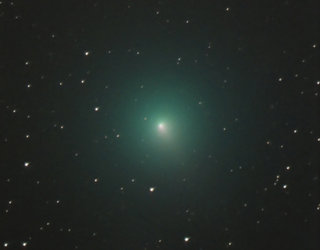Accept all cookies Accept only essential cookies See our Cookie Notice

About ESA
The European Space Agency (ESA) is Europe’s gateway to space. Its mission is to shape the development of Europe’s space capability and ensure that investment in space continues to deliver benefits to the citizens of Europe and the world.
Highlights
ESA - United space in Europe
This is ESA ESA facts Member States & Cooperating States Funding Director General Top management For Member State Delegations European vision European Space Policy ESA & EU Space Councils Responsibility & Sustainability Annual Report Calendar of meetings Corporate newsEstablishments & sites
ESA Headquarters ESA ESTEC ESA ESOC ESA ESRIN ESA EAC ESA ESAC Europe's Spaceport ESA ESEC ESA ECSAT Brussels Office Washington OfficeWorking with ESA
Business with ESA ESA Commercialisation Gateway Law at ESA Careers Cyber resilience at ESA IT at ESA Newsroom Partnerships Merchandising Licence Education Open Space Innovation Platform Integrity and Reporting Administrative Tribunal Health and SafetyMore about ESA
History ESA Historical Archives Exhibitions Publications Art & Culture ESA Merchandise Kids Diversity ESA Brand Centre ESA ChampionsLatest
Space in Member States
Find out more about space activities in our 23 Member States, and understand how ESA works together with their national agencies, institutions and organisations.
Science & Exploration
Exploring our Solar System and unlocking the secrets of the Universe
Go to topicAstronauts
Missions
Juice Euclid Webb Solar Orbiter BepiColombo Gaia ExoMars Cheops Exoplanet missions More missionsActivities
International Space Station Orion service module Gateway Concordia Caves & Pangaea BenefitsLatest
Space Safety
Protecting life and infrastructure on Earth and in orbit
Go to topicAsteroids
Asteroids and Planetary Defence Asteroid danger explained Flyeye telescope: asteroid detection Hera mission: asteroid deflection Near-Earth Object Coordination CentreSpace junk
About space debris Space debris by the numbers Space Environment Report In space refuelling, refurbishing and removingSafety from space
Clean Space ecodesign Zero Debris Technologies Space for Earth Supporting Sustainable DevelopmentApplications
Using space to benefit citizens and meet future challenges on Earth
Go to topicObserving the Earth
Observing the Earth Future EO Copernicus Meteorology Space for our climate Satellite missionsCommercialisation
ESA Commercialisation Gateway Open Space Innovation Platform Business Incubation ESA Space SolutionsLatest
Enabling & Support
Making space accessible and developing the technologies for the future
Go to topicBuilding missions
Space Engineering and Technology Test centre Laboratories Concurrent Design Facility Preparing for the future Shaping the Future Discovery and Preparation Advanced Concepts TeamSpace transportation
Space Transportation Ariane Vega Space Rider Future space transportation Boost! Europe's Spaceport Launches from Europe's Spaceport from 2012Latest

The tail of Comet 46P/Wirtanen
Thank you for liking
You have already liked this page, you can only like it once!
An image of Comet 46P/Wirtanen taken by Jost Jahn at Observatoire de Haute Provence, France, on 10 December 2018.
The comet is visible in the lower right part of the image, with its tail extending to the upper left. The diagonal stripes across the image are star trails.
The comet reached perihelion, the closest point to the Sun along its orbit, on Wednesday 12 December, and is on the way to its closest approach to Earth this weekend, when it might become visible to the naked eye from dark locations.
This image is a composite of 3x33 short, 15 second exposures taken using RBGfilters on the ROTAT telescope, a coma-corrected Newtonian (60cm f/3.2 equipped with an SBIG STL11000 full-frame CCD). It was taken within the framework of a research project by two 11th grade students from Mannheim, Germany, at the Hector Seminar, an organization that fosters gifted high-school students in STEM subjects; the students are being supervised by Carolin Liefke from Haus der Astronomie in Heidelberg, Germany.
The image has been processed with the Larson-Sekanina rotational gradient filter technique to enhance the contrast and reveal the comet’s tail.
ROTAT, the Remote Observatory Theoretical Astrophysics Tuebingen, is operated by the German foundation Interactive Astronomy and Astrophysics (Stiftung Interaktive Astronomie und Astrophysik), which aims to inspire young adults with hands-on science.
Full story: December comet brings back Rosetta memories
-
CREDIT
J. Jahn, Amrum -
LICENCE
ESA Standard Licence

Comet 46P/Wirtanen from South-East France

Comet 46P/Wirtanen from South-East France

Comet 46P/Wirtanen from Madrid

Comet 46P/Wirtanen from Madrid















 Germany
Germany
 Austria
Austria
 Belgium
Belgium
 Denmark
Denmark
 Spain
Spain
 Estonia
Estonia
 Finland
Finland
 France
France
 Greece
Greece
 Hungary
Hungary
 Ireland
Ireland
 Italy
Italy
 Luxembourg
Luxembourg
 Norway
Norway
 The Netherlands
The Netherlands
 Poland
Poland
 Portugal
Portugal
 Czechia
Czechia
 Romania
Romania
 United Kingdom
United Kingdom
 Slovenia
Slovenia
 Sweden
Sweden
 Switzerland
Switzerland

























